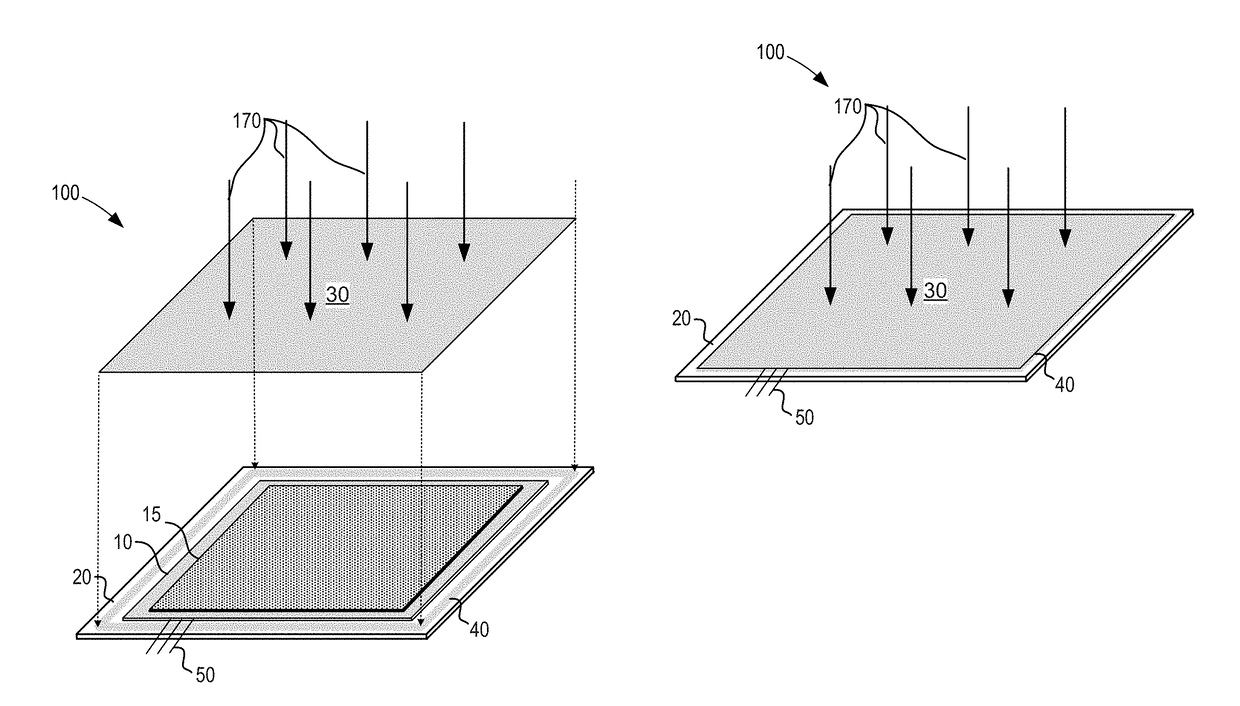Scintillator sealing for solid state X-ray detector
a solid-state x-ray and detector technology, applied in the direction of instruments, x/gamma/cosmic radiation measurement, radiation control devices, etc., can solve the problems of degrading the image quality of the image detector, reducing the active area and sealing large multiply-tiled array imager configurations with conventional sealing techniques, so as to reduce the material cost of manufacturing the x-ray detector and the weight of the x-ray detector. ,
- Summary
- Abstract
- Description
- Claims
- Application Information
AI Technical Summary
Benefits of technology
Problems solved by technology
Method used
Image
Examples
Embodiment Construction
[0017]The following description relates to various embodiments of an x-ray detector, and a method for assembling an x-ray detector.
[0018]In one embodiment, the issues described above may be at least partially addressed by an x-ray detector, comprising: a moisture-impermeable substrate including a non-monolithic conductive portion integrated with a monolithic dielectric portion; a scintillator and an array of CMOS tiles positioned between the scintillator and the substrate; a cover positioned on the substrate and forming a seal therebetween that semi-hermetically encloses the scintillator and the array of CMOS tiles in a covered sealed region; and analog-to-digital electronics conductively coupled to the array of CMOS tiles and to the conductive portion, wherein the conductive portion transmits signals from the covered sealed region to beyond the seal without disrupting a semi-hermeticity of the seal.
[0019]Current methods used to semi-hermetically seal x-ray detectors include using a...
PUM
 Login to View More
Login to View More Abstract
Description
Claims
Application Information
 Login to View More
Login to View More - R&D
- Intellectual Property
- Life Sciences
- Materials
- Tech Scout
- Unparalleled Data Quality
- Higher Quality Content
- 60% Fewer Hallucinations
Browse by: Latest US Patents, China's latest patents, Technical Efficacy Thesaurus, Application Domain, Technology Topic, Popular Technical Reports.
© 2025 PatSnap. All rights reserved.Legal|Privacy policy|Modern Slavery Act Transparency Statement|Sitemap|About US| Contact US: help@patsnap.com



